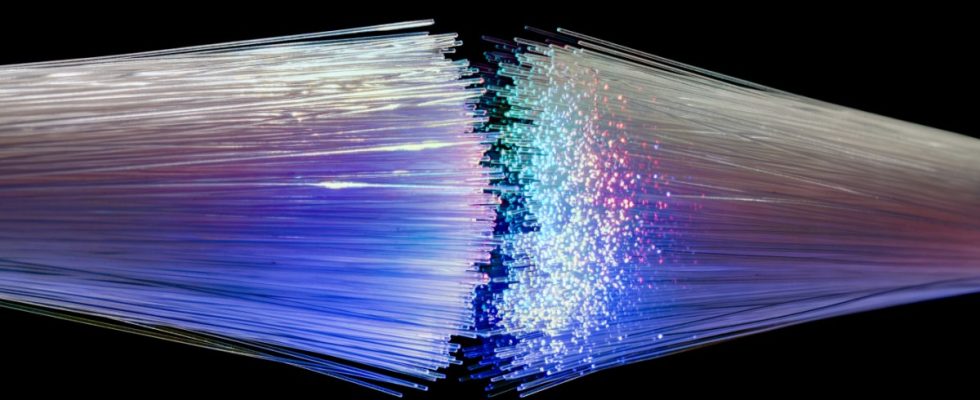The danger has not yet been averted: the ground beneath the Icelandic town of Grindavík has now stopped rising in most places and it no longer shakes as often. The Icelandic weather authority has not yet given the all-clear – a volcanic eruption is still possible.
A few weeks ago, a 15-kilometer-long tunnel formed under the area in southwest Iceland and was filled with magma that rose to half a kilometer below the earth’s surface. A series of violent earthquakes caused sewage pipes to burst, a road to open and fields to sink. This raised fears of an eruption of the volcano on the Reykjanes Peninsula, and 3,700 people were brought to safety. The Blue Lagoon was also closedone of the island’s biggest tourist attractions.
Their hot water comes from wastewater from a geothermal power plant. And there has been an apparatus costing around 200,000 euros there for around two weeks – a laser interferometer that is connected to a telecommunications cable. This runs eight kilometers to the south coast, i.e. through the region where magma rises. “We are extremely close,” says geophysicist Andreas Fichtner from ETH Zurich, who came up with the idea for the project.
All you have to do is connect a hard drive to an existing fiber optic network
The interferometer sends laser pulses through the glass fibers at approximately the speed of light. If there is a source of interference along the route, Fichtner and his team can determine the location and severity of the interference based on the return time. You can even do that detect the smallest vibrations. “We see small earthquakes in real time that we wouldn’t see with the regional seismometer network,” says Fichtner.
With colleagues from ETH Zurich and the Swiss Federal Institute of Metrology Metas, he has further developed this tried-and-tested method: fiber optic networks could be used to observe earthquakes and volcanoes – even without expensive equipment or extra networks. All that is necessary is to connect a hard drive to the existing fiber optic network.
This is made possible by a function that is very similar to high-end headphones: In order to block out ambient noise, microphones record the external noise and send the counter signal into the sound. In the case of fiber optic networks, it’s not about acoustics, but about optics: turbulence in the atmosphere, sea waves or earthquakes deform the fiber optics minimally and slow down or accelerate the light signals. Both change the frequency and the signals become less precise. In order to suppress this noise, the interference frequency is automatically compensated. The vibration of the ground can be read from the correction signal. The data simply needs to be saved and evaluated.
Fichter and his colleagues were able to demonstrate that the method works with the fiber optic connection between Basel and Bern. They were able to trace in detail an earthquake of magnitude 3.9 in Alsace, as they did in August in the specialist journal Scientity reports wrote.
The method is particularly suitable where classic seismometers are missing. For example in the ocean for tsunami warnings. Or in poorer countries like Afghanistan, where a devastating earthquake shook the country in October. “There is a fiber optic network there that reaches into the most remote regions,” explains Fichtner. “We can achieve high coverage with fiber optic networks and learn about the structure of the terrain.”
That’s exactly what he now intends to do for Iceland: Fichtner wants to map the subsurface in a similar way to an ultrasound tomography. So find out how the magma chamber spread over weeks. So far, seismic tomography has only enabled snapshots; The geophysicist hopes to be able to create a dynamic image of the subsurface using the fiber optic networks. “We’ve never seen anything like this before,” he says.

